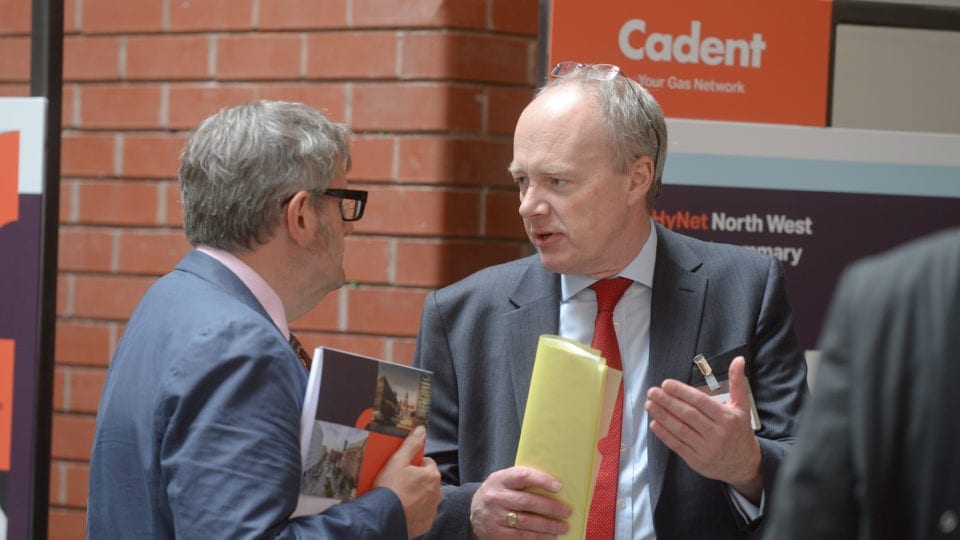Swift and decisive action needed on carbon capture
Is the UK on the brink of finally realising the economic and environmental potential of Carbon Capture, Usage and Storage (CCUS) technology? A report by the Government's CCUS Taskforce urges swift and decisive action to tip the balance for an industry primed to deliver. Simon Fairman, director network strategy and safety at Cadent, gives his view.
19th July 2018 by Networks

In early 2018, Cadent was one of a group of over 40 experts from industry and academia invited to come together to propose cost-effective ways to deliver CCUS to support the Government’s ambition of “having the option to deploy CCUS at scale during the 2030s”. Last week the CCUS Cost Challenge Taskforce published its final report. It is a rigorous and up to date assessment of the current commercial and socio-economic context for CCUS; with clearly defined recommendations to unlock the door to delivery.
The full report is available here but I would like to draw out some of the themes which reflect Cadent’s vision for the future role of CCUS technology.
The history of CCUS in the UK is as a tool for decarbonising electricity. However, it is now well accepted that CCUS has a much broader application than this and offers a tantalising prospect for a new chapter in UK energy innovation.
CCUS technology can deliver the deep reductions in heat and industrial emissions that are essential to meet the UK’s 2050 carbon reduction targets, along with a wide range of potential applications as part of a hydrogen economy. This can extend to a reduction in transport fuel emissions, as well as the use of hydrogen based fuels to produce decarbonised electricity, bolstering the market for renewable generation. CCUS infrastructure can also help to ‘future proof’ existing process industries, and encourage new investment. It’s time to set aside the lingering scepticism about CCUS as an expensive, risky technology for power generation and focus on maximising its role as a flexible ‘decarbonised service industry’ in a balanced energy system.
To do this, across the public and private sectors we must mobilise to make CCUS on the ground a reality. We cannot allow CCUS to slip again into the gap between ambition and reality. The risks of non-delivery now will far outweigh the uncertainties.
The Taskforce’s Report is direct and uncompromising in its recommendations for Government role in achieving this. For it to achieve its 2030 ambition, it must make firm policy commitments in the next 12 months to kick start early CCUS development. By looking to the supportive funding mechanisms used to successfully accelerate the offshore wind market, we can see a workable model for early investment in CCUS. Buoying up initial projects in this way can set the scene for a surge of further innovation and growth, stimulating the private investor market.
I echo the sentiments of the Report that for its part, industry must continue to come to the table with commercially viable, well supported and cost-effective programmes that bring tangible environmental and economic benefits.
Cadent’s HyNet North West (NW) project does exactly this.
Centred around the Merseyside industrial cluster, HyNet NW integrates CCUS into a thriving commercial context. Designed with a thorough understanding of the urgent need for a deliverable, competitively costed project, HyNet NW can deliver a robust operating example of the technological and financial viability of CCUS by the mid-2020s. It keeps costs low by repurposing existing infrastructure in the Liverpool Bay oil and gas fields and crucially, it hits the timeline and scale needed to reach the 2030 ambition. Long-term the initial model project can not only expand its reach, it can be an exemplar programme for UK roll out.
HyNet NW’s socio-economic potential is equally strong. In its delivery it is a people story. CCUS and hydrogen can bring cleaner air, make carbon saving light work for UK customers, improve job security and generate new jobs. It can also develop a skills and knowledge hub for low carbon technology with credible export potential. Our work so far indicates a swell of positive enthusiasm for what HyNet NW can bring to the North West and its people. I have no doubt that it is a great place to start the CCUS journey.
This report is an important milestone for CCUS in the UK, with a clear vision and defined recommendations. As we look to our industrial heartlands to build prosperous future partnerships between Government and industry, I’m optimistic we can now seize the CCUS opportunity that is within our reach.
Comments
Login on register to comment
Related content

Gas
Cadent backs launch of major bio-CNG HGV refuelling station
Gas network’s £250,000 infrastructure investment ensures supplies to existing connected customers have not been impacted

Gas
Editor’s blog: The biggest tests of resilience are yet to come
Network content director Jane Gray reflects on the industry's coronavirus response to date and the challenges still to come.

Gas
From the front line: Chris Garside and Andy Simcoe, Northern Gas Networks
Key workers across the power and gas networks are playing a critical role in the national response to Coronavirus. Network has committed to profiling their stories.
Related supplier content
![‘Learning by doing’ on the road to net zero [test product]](https://networksonline.s3.amazonaws.com/products/images/3.jpg)
People & Skills
‘Learning by doing’ on the road to net zero [test product]
DSO director Andrew Roper discusses 'Learning by doing'

Power
Load patterns and lockdown: how Covid-19 is impacting electricity networks
Insights into dynamics on the low voltage network as the outbreak unfolds

Downloads
Protect electrical equipment from insulation failure
Insulation faults are a major cause leading to the eventual failure of electrical equipment. Partial discharge (PD) is a very reliable indicator of developing insulation faults. Regular PD testing allows users to detect and analyze PD activity